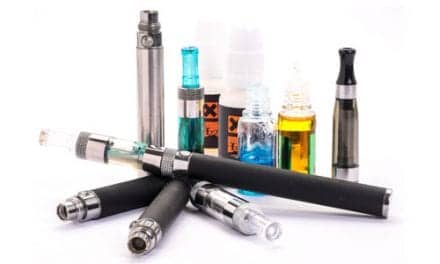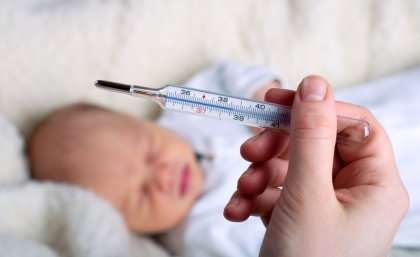The application of invasive suction to the endotracheal tube and lower airway is necessary to minimize the detrimental effects of mucus or foreign matter.
|
In the intensive care unit (ICU), patients often require support of ventilation and oxygenation through endotracheal intubation and invasive positive-pressure ventilation (IPPV). As Woodgate and Flenady have noted, “The presence of an endotracheal tube causes soft-tissue irritation and increased secretions.”1 Intubation, in bypassing the natural humidification process, can lead to thickening of secretions. Increased or thick secretions add to the risks of endotracheal-tube blockage, lobar collapse, and compromised gas exchange.
Suction, while customary, carries many risks (trauma to the carina, physiological changes, and increased intracranial pressure) with grave effects in newborns and in patients with closed head injury (CHI). A 1998 study2 and a survey of nurses and RCPs3 found wide variation in suction methods and frequency.
Suctioning
A pivotal study4 of normal saline instillation (NSI) conducted in 1994 identified a potential risk related to suction. The amount of bacterial inoculum potentially seeded into the lower airway during suction was measured. Ten endotracheal tubes taken immediately after extubation were randomly subjected to two procedures. Some had a sterile catheter passed through the tube. A 5-cm section was cut off of the tip with sterile scissors and deposited into a sterile specimen container. Other tubes had 5 mL of normal saline instilled through them into a sterile container. Each tube was then subjected to the opposite procedure. One mL of normal saline was added to each catheter tip container and mechanically vibrated. The fluid from both procedures was prepared and incubated. After 48 hours, a bacterial count was taken. The number of bacteria from the catheter samples was less than 40 to 60,000 inocula; from the instilled samples, less than 40 to 310,000 inocula. Therefore, the researchers recommended ending all NSI.
While the numbers indicate the potential for reinoculation of the lower airways, there are several problems. Due to the small size of the study sample, it is not possible to extrapolate the results to all intubated patients. The length of intubation varied widely from 2 to 39 days, and it is not surprising that the endotracheal tube from the longest intubation had the highest inoculum count. Infections present before intubation were not considered. No mention was made of whether (or how) humidification was provided. If humidity was inadequate, there may have been more secretions adhering to the inside of the endotracheal tube. The study was also conducted in vitro. As Scoble et al have noted, “Dislodgment by a suction catheter of bacteria colonizing the endotracheal tube has been demonstrated to occur in in vitro experiments, but there is no clinical evidence that this mechanism leads to infection.”5 The bacteria in question had already colonized the patient’s lungs.
Potential Problems
This study does not provide strong enough evidence for a change in practice; however, potential problems with the accepted methods of suction were identified, which led to further research in this area. A 1999 literature review and meta-analysis by Blackwood6 found that NSI is purported to aid in removing secretions by loosening and thinning the secretions, stimulating a cough, and lubricating the endotracheal tube; however, no scientific evidence was found to support those claims. He cites a 1973 study’s finding that mucus and water do not mix, even after vigorous shaking. Studies that measure secretions removed following NSI fail to account adequately for the saline in the sample, calling the results into question. One study, Blackwood reports, observed saline tagged with technetium 99. After instillation, serial radiographs were taken over a period of 30 minutes. Results showed that the saline stayed in the trachea and main bronchi, never reaching the periphery of the lungs. Only 19.7% of the saline was retrieved by suction. Validity of the study was reduced by a small sample size and the fact that, in practice, 30 minutes will not pass between instillation and the application of suction. If the saline remains in the trachea and bronchi, where it will be mobilized by a cough, it is not clear why such a small percentage was retrieved.
Blackwood looked at the effect of NSI on physiological parameters, finding no statistically significant changes in heart rate, blood pressure, and respiratory rate. Each usually changed but returned to baseline quickly in all studies. This was not true of pulse-oximetry findings (Spo2). There was a much slower return to baseline when saline was instilled. Blackwood reported that in studies of psychological well-being that used patient interviews about NSI and suction, the majority reported being filled with panic and experiencing a drowning sensation. Blackwood concluded, “The existing evidence does not support NSI as being beneficial in removing secretions. It is perhaps time that this nonresearch-based practice was abandoned.” He recommended a “focus on alternative measures of preventing dried and tenacious secretions in the mechanically ventilated patient.”6
A study7 of NSI’s effects on oxygen saturation, heart rate, and blood pressure found that Spo2 decreased immediately after the application of suction, whether or not saline had been instilled; however, Spo2 reached a level above that seen before suction within 10 minutes when no saline was used. With NSI, the Spo2 dropped markedly within 4 minutes and had not returned to baseline levels after 10 minutes. Increases in both heart rate and blood pressure returned to baseline levels within 10 minutes. It is noteworthy that the patients in this study were not preoxygenated. This may have affected the magnitude of the decrease in Spo2, but might not affect the variation between the two groups. Similar changes were found in NSI’s effects on mixed venous oxygen saturation; recovery time was twice as long after NSI. The investigators, however, have admitted the existence of problems with validity and uncontrolled variables in this study.8
In 1998, Wood9 compared suction applied every 2 hours to suction used as needed (with need determined by assessment). The author looked at changes in peak airway pressure, heart rate, and mean arterial pressure. Significantly better outcomes and fewer complications were reported for the assessment group.
A study10 using flow-volume curves to detect the presence of secretions found that the presence of a sawtooth pattern on the loop was a positive predictor. The authors noted that fluid in the ventilator circuit must be drained before assessing secretions.
Tracheostomy Tubes
The bulk of the literature deals with endotracheal tubes, but it also applies to tracheostomy tubes. If the patient has a tracheostomy, significantly less of the suction catheter will fit into the tube before the carina is reached. The RCP should insert the catheter gently and stop when obstruction is felt. Patients with tracheostomy tubes are regularly weaned from IPPV and transferred to subacute care units where the same suction issues apply. The patient will use an aerosol tracheostomy collar delivering particulate moisture (rather than molecular humidity delivered through a heated ventilator circuit). An aerosol might moisturize secretions in the tracheostomy tube, but it cannot provide hydration in the lung. It is important to ensure the patient is adequately hydrated systemically, whether intravenously, by feeding tube, or by mouth. The most common reason for tracheostomized patients to return to the ICU is thick, tenacious secretions that they cannot clear.
Hyperventilation and hyperoxygenation are easily achieved if manual resuscitation (bagging) with 100% oxygen is used; however, there are risks associated with this practice. Secretions may be sprayed into the immediate environment, exposing the staff to contamination. Large volumes increase airway pressures, and high rates may result in inadequate exhalation time leading to auto positive end-expiratory pressure (PEEP). Both of these can increase intrathoracic pressures, impede venous return, and increase the danger of pneumothorax. Closed suction catheter systems remove some of the risks of bagging. Hyperoxygenation is achieved by using the ventilator’s 100% oxygen button or adjusting the Fio2 at the blender. To hyperventilate the patient, many ventilators have a manual-breath button. Thought and care must be taken when hyperventilating the patient to avoid cardiopulmonary risks. Often, hyperoxygenation alone will suffice to protect adult and pediatric patients from adverse physiological reactions.
Some intubated patients retain their ability to swallow and handle oral secretions and sinus drainage; however, the majority do not, increasing the risk of microaspiration and infection. It is important that all caregivers also assess, and apply suction to, the mouth and nose.
Risks
Suction is invasive, with risks that should be avoided when not clinically justified. Some patients need suction every 30 minutes due to excessive mucus production, which is quickly and easily assessed. Others may need it only once or twice per shift and may require a thorough assessment before suction is applied. The stress of suction should be avoided if no return is expected; however, it is appropriate to use suction at least once per shift to assess the patency of the tube. Some patients exhibit clear breath sounds, but have secretions present that should be cleared.
The risk of reintroducing bacterial inoculum into the lower airway is of concern in the immunosuppressed patient. Closed suction catheter systems use a seal that effectively cleans the outside of the catheter as it is withdrawn. The tip and interior of the catheter are not cleaned in this fashion. To clean these places, a saline instiller or a syringe filled with saline is placed in the irrigation port. With the catheter fully withdrawn, the user applies suction and instills the saline. This flushes the secretions from the catheter, reducing a source of reinoculation and leaving no secretions to dry and plug the catheter.
At no time is it appropriate to leave the instiller on the irrigation port after suction is complete. It can become a medium for bacteria inocula from the patient’s airway or the environment, transferred from the practitioner’s gloves when the top is removed. The instillers seldom seal the irrigation port and can create leaks, with loss of volume and PEEP. In critically ill adults or infants using very small tidal volumes, this can be serious. The instiller must be removed and discarded.
If patients are dehydrated, their mucus is thicker and more tenacious. When secretions are so thick that they occlude the suction catheter, saline can be a carrier/lubricant. In neonatal and pediatric ICUs, the catheter is so small that catheter occlusion is a more common problem. Once again, saline may help as a carrier/lubricant.
If the practitioner suspects that the endotracheal tube is becoming blocked by thick or dry secretions, instilling saline as the catheter is withdrawn can help to pull them off the inside of the endotracheal tube. The humidity in the ventilator circuit may need to be increased. If the catheter sticks when advanced, a small amount (1 mL) of saline can be a lubricant. At least one pass should be attempted without NSI to assess the thickness of secretions. Usually, no saline is needed; the research evidence shows that NSI should be avoided, when possible.
Desaturation is a documented side effect of NSI, but if the patient’s Spo2 is dropping despite suction without NSI, and clinical evidence suggests mucous plugging, it may be appropriate to instill saline and use a manual resuscitator. The forceful breaths and the saline carrier may facilitate the removal of plugs. This should not be routinely used, but should be reserved for use only in the face of deteriorating clinical status.
A final issue is the risk of nosocomial infection. The process of suction is often blamed as its source. Good hand washing, especially between patients, is critically important. Gloves must always be worn, and the saline instiller must be removed and discarded.
All practitioners providing direct patient care have the opportunity to affect nosocomial infections. It is critically important to take responsibility for those risks that they can control.
Neonatal Considerations
In an effort to minimize the amount of stimulation that premature infants receive, all care, including suction, is clustered together. Unless there are clear indications of a need for suction, the infant should not be disturbed until the next scheduled care time.
The closed suction system used on infants has colored marks on the catheter in increments of 1 cm. These are used when advancing the catheter to the end of the endotracheal tube only, reducing the risk of mucosal trauma.
The majority of intubated patients in the NICU are preterm infants. Prematurity carries a number of risks unique to this population. The incidence of retinopathy is increased by the delivery of high oxygen concentrations. Many cardiac anomalies require a patent ductus arteriosus to provide enough oxygenated blood systemically. Increased oxygen levels can cause the ductus to close. One source11 recommends increasing the oxygen level only 10% above what the neonate is already receiving by ventilator.
Increased intrathoracic pressures, caused by hyperventilation, increase the risk of pneumothorax and intracranial hemorrhage; therefore, hyperventilation before suction is seldom used in this setting.
Practitioners strive for zero disconnections of the circuit from the endotracheal tube in patients ventilated using high-frequency oscillation. The patient is given suction only as clearly indicated, with a closed suction system. The closed suction system cannot be used with high-frequency jet ventilation so the patient must be disconnected. Because of the flow pattern of this type of ventilation, secretions may be lining the endotracheal tube. Suction is applied when advancing the suction catheter as well as when withdrawing it.
Neurosurgical Considerations
Patients with CHI are at risk of further ischemic brain injury due to hypoxemia and hypercarbia. Studies of CHI patients show that hyperventilation and hyperoxygenation prior to suction can reduce the risk of further ischemia in this population.12,13 Hyperventilation should be used with caution. Overzealous bagging can lead to cerebral artery vasoconstriction and decreased cerebral blood flow.
To reduce patient stress and the resulting increased intracranial pressure, suction with a single pass is often adequate to remove the secretions. If not, the RCP should allow more recovery time between passes.
William Demaray, RRT, is a staff therapist at the University of New Mexico, Health Sciences Center, University Hospital, Albuquerque, NM. This article has been excerpted from a self-study module that he developed for the hospital.
| References |
| 1. Woodgate PG, Flenady V. Tracheal suctioning without disconnection in intubated ventilated neonates (review). Cochrane Database Syst Rev. 2001;4:1-14. 2. Blackwood B. The practice and perception of intensive care staff using the closed suctioning system. J Adv Nurs. 1998;28:1020-1029. 3. Schwenker D, Ferrin M, Gift AG. A survey of endotracheal suctioning with instillation of normal saline. Am J Crit Care. 1998;7:255-260. 4. Hagler DA, Traver GA. Endotracheal saline and suction catheters: sources of lower airway contamination. Am J Crit Care. 1994;3:444-447. 5. Scoble M, Copnell B, Taylor A, Kinney S, Shann F. Effect of reusing suction catheters on the occurrence of pneumonia in children. Heart Lung. 2001;30:225-233. 6. Blackwood B. Normal saline instillation with endotracheal suctioning: primum non nocere (first do no harm). J Adv Nurs. 1999;29:928-934. 7. Ackerman MH, Mick DJ. Instillation of normal saline before suctioning in patients with pulmonary infections: a prospective randomized controlled trial. Am J Crit Care. 1998;7:261-266. 8. Kinloch D. Instillation of normal saline during endotracheal suctioning: effects on mixed venous oxygen saturation. Am J Crit Care. 1999;8:231-242. 9. Wood CJ. Can nurses safely assess the need for endotracheal suctioning in short-term ventilated patients, instead of using routine techniques? Intensive Crit Care Nurs. 1998;14:170-178. 10. Jubran A, Tobin MJ. Use of flow-volume curves in detecting secretions in ventilator-dependent patients. Am J Respir Crit Care Med. 1994;150:766-769. 11. Koff P, Eitzman D, Neu J. Neonatal and Pediatric Respiratory Care. 2nd ed. St Louis: Mosby-Year Book; 1993. 12. Kerr ME, Rudy EB, Weber BB, et al. Effect of short-duration hyperventilation during endotracheal suctioning on intracranial pressure in severe head-injured adults. Nurs Res. 1997;46:195-201. |









